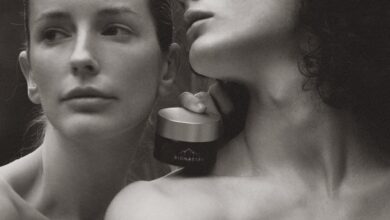Riding your bike may be a lot of fun and a wonderful way to stay in shape. However, riding a bike has inherent risks, especially when sharing the road with motor vehicles. When sharing your ride with the regular traffic, it’s critical to have a bike in good working order and to pay attention to some basic but crucial cycling needs.
Take Care Of Your Environment
Follow the rules and trust your instincts. Every cyclist has a responsibility to understand the traffic rules, both as they apply to cyclists and as they pertain to other road users. This includes teaching children about the rules they must follow. When riding in traffic, it’s also crucial to employ common sense and rely on all of your senses to help you navigate safely. Prepare for the unexpected to avoid unpleasant surprises. Road awareness is a crucial skill to master. This entails scanning the road ahead for rough surfaces, drain covers, parked cars, potholes, and puddles. Looking around also helps you anticipate future problems and prepare for junctions, roundabouts, and traffic signals, among other things. This prevents you from having to swerve, brake suddenly, or perform unexpected maneuvers that other road users aren’t expecting.
Wear A Helmet
When cycling, it’s usually the best idea to wear a helmet. In some places, you are required by law to wear a helmet. You can check bicycle helmet laws in Honolulu and see why it is important to keep yourself and others safe in your biking adventure. Even if it isn’t required by law, it’s a good idea to wear one to increase your safety because head injuries are the most prevalent fatal injury in bike accidents. Also, wearing eye protection is quite beneficial, having in mind dirt, pebbles, and even bugs can get into your eyes and cause temporary vision problems. This can be avoided with a set of bicycle-friendly glasses.
Give Signals
Give other road users a heads-up on what you’re going to do. Check behind you, then signal with plenty of time to spare before executing your maneuver. Maintain a position in the lane that prevents vehicles on your left from approaching you too near. It’s a good idea to practice checking behind you and/or taking one hand off the handlebars to signal in a safe, traffic-free environment.
Raising your arm straight and parallel to the ground with an open palm facing forward is far more visible and attention-getting than lifting and holding your arm in place with a bent elbow. Before removing your hand from the handlebar, examine the road ahead for obstacles such as stones, holes, or anything else that could cause your wheel to bounce. Signaling not only allows them to anticipate your next move but also gives riders a reputation for being courteous.
Establishing eye contact may assist you in determining if the driver has spotted you or not, but you should avoid making judgments about their attentiveness. If you don’t get a response, presume they haven’t noticed you, and be prepared to brake or steer as needed.
Check Your Bike
Check your bicycle gear. It’s very important to make sure your bike is safe to drive and in a good condition before you start out. This is especially true for older bicycles. When inspecting your bike, keep the following in mind:
- Is the air in your tires properly inflated? Make sure your tires are free of any holes or other damage.
- Are your brakes in good working order and are they clean?
- Is your chain in good condition, clear of debris, and able to turn freely?
Pull the brake levers on and off while you ride your bike around a flat surface. If they don’t function and you don’t know how to fix them, call your local bike shop for assistance. Fill a shallow dish halfway with water and place the tire in it. Check to see whether any bubbles are escaping. If any bubbles appear, your tire is ruptured, and you may either have it repaired at a bike shop or do it yourself. Replace the other tire and repeat the process. Also, sit down on your bike and make sure the tips of your toes are touching the ground to check your seat. Adjust the bike seat and handlebars as appropriate.
Lighting
Because bikes are smaller and harder to see than other vehicles, they are obliged to keep a front headlight on at all times. Front white light is normally required for nighttime riding, but adding other lights, as well as reflective clothing as indicated above, will help to maximize your visibility. Lighting is beneficial for both day and night riding.
Night Ride
Riding at night is not recommended. Riding at night is significantly more risky than riding during the day since it is more difficult for others to see you. Wear anything that makes you more visible to others if you have to ride at night. Ensure that your bicycle has reflectors on the front and back, as well as reflectors on your tires so that others can see you.
Riding a bicycle has many benefits and it is quite important for our health, but it should be done with extra care and precaution. As a cyclist, you are an active traffic participant, so have in mind you need to think of your safety, but also of other people who are sharing the road with you.




